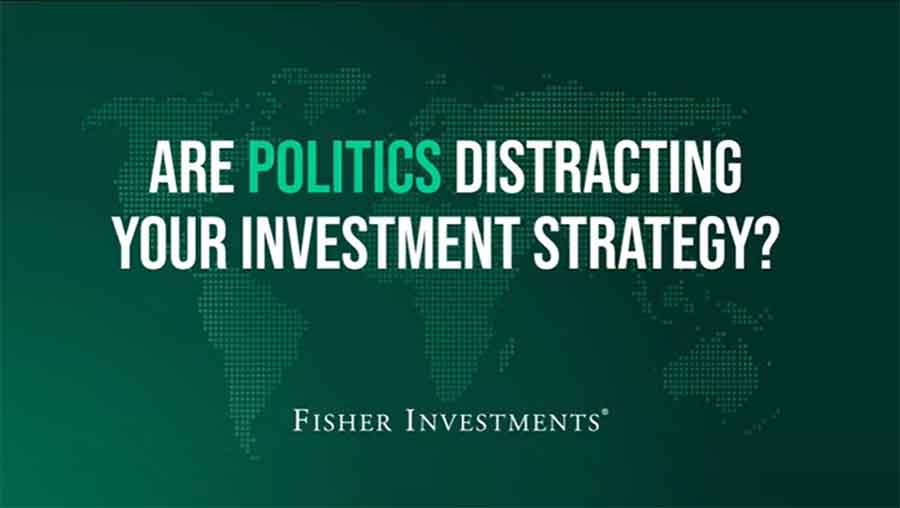Personal Wealth Management / Market Analysis
Tariff Dodgeball, Anyone?
A US-China trade deal isn’t make or break when many companies are largely avoiding tariffs.
President Trump’s weekend meeting with Chinese President Xi Jinping at the G20 summit appears to have been fruitful, yielding at least a temporary trade truce. In exchange for China’s pledge to buy more US agricultural and industrial products, Trump agreed not to raise tariffs on Chinese imports on New Year’s Day, as planned, or enact new ones. Also encouraging, they launched 90-day talks on “structural changes” to China’s trade practices, including their handling of intellectual property. Many are now cautiously optimistic for a comprehensive US-China trade deal after months of escalating tariffs (what some call a “trade war”). Some believe a trade truce that sticks is the key to whether global stocks rise or fall, with sell-side investment analysts even putting price targets to different outcomes. To us, this overrates tariffs’ impact. While the weekend’s ceasefire is nice—and while a broader deal would be delightful—whether we get one or not isn’t as momentous as many believe, in our view. One reason: Bilateral tariffs are easily avoided. Here are a few examples of just how companies are doing that presently.
Some firms are avoiding tariffs the direct, transparent way: asking for waivers. The administration has granted thousands of exemptions to its steel and aluminum tariffs. But where waivers aren’t an option, a company can just reroute trade to—or through—countries not subject to tariffs. This isn’t costless, but the extra mileage and fees are likely far less than paying tariffs. To see this at work, consider the latest in global oil markets. China hasn’t added duties on US crude, but it largely stopped buying the stuff during the trade spat, as shippers don’t want to risk tariffs taking effect during a tanker’s typical 45-day voyage from America to the Middle Kingdom. Imports sank from an average of 350,000 barrels per day (bpd) in 2018’s first seven months to a goose egg in August and just 30,000 bpd in September. But markets are adapting. Russia and Saudi Arabia handily met Chinese demand. Meanwhile, US oil exports remain at record highs, with shipments going to Europe, Taiwan and India, among others.
Other goods caught in tariff spats are also finding their way. As one artificial Christmas-tree maker in China says, “If they don’t like my price, I can always sell to buyers from another country.” In global markets, global sellers aren’t at a loss for meeting global buyers’ demand, even if governments make the route a little more circuitous. That is especially evident in the world of soybeans. US soybean exports to China have plummeted, as many feared they would in the run-up to new tariffs. But shipments to Argentina are booming! That may seem a tad odd, given that Argentina is also an exporter of soybeans and processed soybeans. We suspect they are processing US beans to re-export them elsewhere … like maybe China. Or, at least, using American soybeans to meet domestic demand while they boost exports of their own crops. Is this optimal for American growers? Probably not. But it shows there are ways to skirt tariffs and defray some of their impact.
Companies can also avoid extra charges by relabeling or tweaking goods. For instance, companies can just relabel shipments of goods subject to tariffs to something that isn’t. A shipment of “steel plates,” subject to 25% levies, can easily become tariff-free “turbine parts.” Companies can also slightly alter their products to skirt tariffs. For example, rubber-soled boots and shoes carry a 37.5% tariff, but duties on shoes with fabric soles are only 12.5%. Just adding a sheen of fabric to rubber soles qualifies them for the lower rate! Or for clothes, a waterproof jacket has a 7.1% tariff, but one that isn’t takes a 27.7% hit. So making jackets water-resistant can reduce costs. So can adding some feathers, as a jacket filled with 10% down feathers by weight is tariffed at just 4.4%. Sportswear vendors have done the math! Teams of “tariff engineers” then design their clothing lines to minimize tariffs. We hear light down water-resistant outerwear is the new black.
While a lot of these workarounds are anecdotal, they illustrate the lengths companies will go to minimize costs and get around new tariffs. This is why we have long suspected tariffs’ net economic impact will be even smaller than the worst-case-scenario math we have shown in past MarketMinder commentaries. If the tentative US-China deal falls through and they hike tariffs on all remaining bilateral trade—and then all threatened global auto tariffs go through—it still wouldn’t be big enough to make a dent. If we overshoot and apply a 25% tariff rate across the board, tariff payments would still amount to less than 0.3% of global GDP, based on the IMF’s latest GDP estimate. Factor in widespread avoidance, and that tiny figure gets even tinier. Meanwhile, global trade volumes rose another 2.3% y/y (4.3% in value terms) in September.[i] Though tariffs may yet weigh on trade, we doubt they will torpedo its growth altogether.
If you would like to contact the editors responsible for this article, please message MarketMinder directly.
*The content contained in this article represents only the opinions and viewpoints of the Fisher Investments editorial staff.
Get a weekly roundup of our market insights
Sign up for our weekly e-mail newsletter.

See Our Investment Guides
The world of investing can seem like a giant maze. Fisher Investments has developed several informational and educational guides tackling a variety of investing topics.





